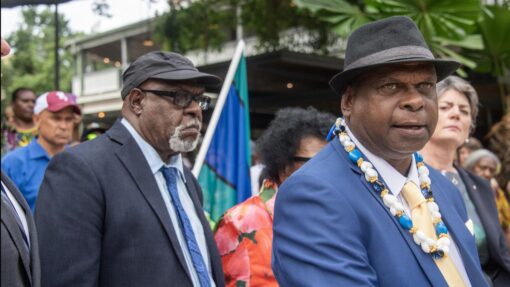Remote jobs program to help close the gap in employment
Rudi Maxwell |
As part of their approach to Closing the Gap, the federal government has announced a new program that aims to create 3000 jobs in remote areas over the next three years.
The Albanese government will release its blueprint to address Indigenous inequity on Tuesday, when they present the Commonwealth’s Closing the Gap annual report 2023 and implementation plan 2024 to the Parliament.
Last Wednesday the Productivity Commission published a damning review of the National Agreement on Closing the Gap, calling for a radical shift by all governments because they’ve failed to fully grasp the nature and scale of change required to meet their obligations.
The agreement was signed by all states and territories and the Coalition of Aboriginal and Torres Strait Islander Peak Organisations in 2020 to address entrenched inequality.
It is built around four Priority Reforms regarding transforming the way governments work with Indigenous people to improve outcomes and includes 17 socioeconomic targets.

Target 7, to increase the proportion of Indigenous youth (15-24 years) who are in employment, education or training to 67 per cent by 2031, is not on track.
And Target 8, to increase the proportion of First Nations people aged 25-64 who are employed to 62 per cent by 2031, is not on track in the Northern Territory, where a high proportion of Indigenous people live in remote communities and are unemployed.
Indigenous Australians Minister Linda Burney said the $707 million investment was the first step in delivering on the government’s commitment to replace the coalition’s Community Development Program, a controversial work-for-the-dole program that targeted Indigenous people in remote communities.
She said the new program would let communities decide what jobs were created – such as community services and the care sector, hospitality and tourism, horticulture and retail – and it was designed to help build the remote workforce and reduce the reliance on fly-in, fly-out workers.
“For too long, people in remote communities have missed out on economic opportunities and have been stuck in cycles of poverty,” Ms Burney said.
“People in remote communities should have access to the benefits and dignity of work – for themselves, their families and the next generation.
“This is about putting communities in the driver’s seat to create local jobs and businesses.
“Rates of unemployment in remote communities are unacceptable and this is the first step in turning that around.”
A $185 million Community Jobs and Business Fund will be set up for local and community owned businesses to apply for money for equipment and capital.
Assistant Minister for Indigenous Australians and Indigenous Health Malarndirri McCarthy said the new program is about closing the gap in employment and will include superannuation, long service leave and better workplace conditions.
“As a former participant of a remote jobs program myself, I know all too well the importance that meaningful employment has on economic empowerment, health, happiness, and general wellbeing,” she said.
The government said, in the coming months, it would work in partnership with Indigenous organisations to design and implement the new jobs program to build skills and experience, and deliver services that communities wanted.
The program will start in the second half of this year.
AAP


